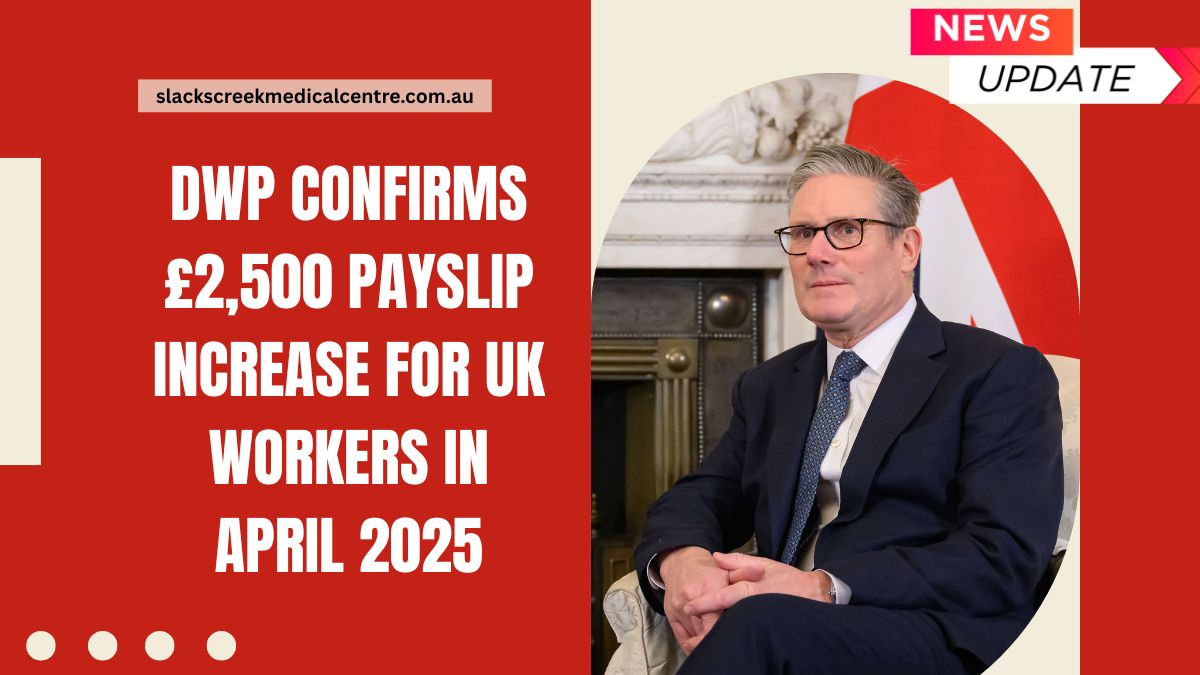In April 2025, the UK government will introduce a significant uplift in the National Minimum Wage (NMW) and National Living Wage (NLW), benefiting millions of employees across the country.
This wage reform is part of the government’s “Plan for Change”, designed to ease the cost of living and address age-based wage inequalities. The revised rates are set to provide full-time workers with an annual pay increase of up to £2,500.
Let’s dive into the details of the £2,500 boost, its economic implications, and how this change will affect workers and employers.
Summary of National Minimum and Living Wage Rates (Effective April 2025)
The April 2025 wage increase will impact several worker categories, with notable increases in both the National Living Wage and National Minimum Wage rates. Below is a breakdown of the updated rates:
| Category | Old Rate (2024) | New Rate (2025) | Increase |
|---|---|---|---|
| National Living Wage (21+) | £11.44 | £12.21 | +£0.77 |
| 18-20 Year Olds | £8.60 | £10.00 | +£1.40 |
| Apprentices | £6.40 | £7.55 | +£1.15 |
These increases aim to support employees in meeting rising living costs, particularly groceries, utilities, and transport.
Enhanced Earnings for Full-Time Workers
The £2,500 annual boost is particularly beneficial for those employed full-time on the National Living Wage. The hourly wage is increasing by 77p, meaning a typical full-time employee working 40 hours per week could see their annual income rise by approximately £2,500.
This extra income can go a long way in alleviating financial pressures, allowing workers to cover essential living expenses.
The government’s effort to raise wages for workers on lower pay scales is a significant step in addressing income inequality and promoting fairness across age groups.
Addressing Long-Standing Age-Based Pay Gaps
A central feature of the 2025 wage reform is its goal to narrow the pay disparity between younger and older workers. Historically, younger workers have been paid less, despite performing the same roles as their older counterparts.
With the 2025 increase, 18-20-year-olds will see an impressive rise of £1.40 per hour, marking one of the largest increases ever recorded for this age group.
Apprentices, who are often at the beginning of their careers, will also see a rise from £6.40 to £7.55 per hour, helping them earn more as they gain skills and experience.
Broader Economic Benefits
The ripple effects of the wage increase will positively impact the UK economy. With higher wages, workers will have more disposable income, which can drive consumer spending—a key component of economic growth.
Local businesses, especially in the retail and service sectors, stand to benefit from increased customer demand.
Additionally, improved wages lead to better job satisfaction, increased productivity, and higher retention rates, which ultimately benefit employers by reducing the need for expensive recruitment and training costs.
Government Support for Businesses
While wage hikes are beneficial for workers, they may present challenges for small and medium-sized enterprises (SMEs), which could struggle with the increased labor costs. To support these businesses, the government is offering several measures:
- HMRC and Acas Advisory Services: Businesses will receive expert guidance on how to implement the new wage rates.
- Staggered Economic Adjustments: The government plans to phase in related economic policies to ease the financial burden.
- Financial Assistance Programs: SMEs facing difficulties in meeting the wage obligations will have access to targeted financial aid.
These strategies are designed to help employers stay compliant with the new pay structure without compromising their financial viability.
How Workers Can Safeguard Their Rights
With the wage reform now in effect, workers need to ensure they’re receiving the correct pay. Here’s how employees can make sure they’re paid fairly:
- Monitor Payslips: Regularly check your payslips to ensure that your hourly rate matches the updated 2025 minimums.
- Communicate with Employers: If you notice any discrepancies, raise them with your employer promptly.
- Seek External Support: If issues persist, contact HMRC or Acas for confidential advice and enforcement support.
Building Toward a More Equitable Future
The 2025 wage increases are part of the UK government’s broader economic renewal plan, which focuses on:
- Job creation and upskilling to improve employability and career progression.
- Supporting underrepresented groups, such as young adults and disadvantaged individuals, to enter the workforce.
- Long-term income equity by ensuring fair compensation across different sectors and age groups.
These steps aim to create a more equitable labor market, ensuring that all workers are compensated fairly for their contributions.
The £2,500 payslip boost confirmed by the UK government in April 2025 is a significant step toward improving the financial well-being of full-time workers, particularly those on lower pay scales.
This increase, along with the narrowing of age-based wage gaps, addresses pressing issues of income inequality and supports economic growth.
Both workers and employers must stay informed about the changes, ensure compliance, and make the most of the opportunities this reform offers.
FAQs
Who is eligible for the £2,500 payslip boost?
The £2,500 boost applies to full-time workers on the National Living Wage and National Minimum Wage, with increases based on age.
How will the wage increase affect businesses?
The wage increase may challenge small and medium businesses, but the government is offering advisory services and financial assistance to help ease the transition.
How can I ensure I’m receiving the correct pay after the wage increase?
Regularly monitor your payslips, ensure the new hourly rates are applied, and contact your employer if discrepancies arise.
